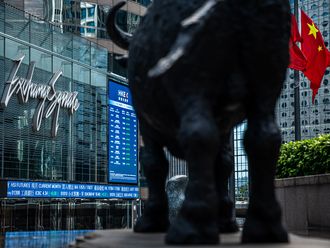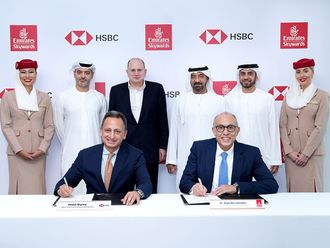The oil market in March couldn't have been better as Saudi Arabian oil minister Ali Al Nuaimi said "good demand, reliable supply, beautiful prices we are very happy", prior to the Organisation of Petroleum Exporting Countries' (Opec) meeting in Vienna on March 17. The price of the Opec basket of crude oils that day was the highest in March at $78.25 per barrel (Dh287) ($/b) and the average for the month is likely to be slightly above $77/b or just over $4/b improvement over February's prices.
Things could have been even better but for the news of slowing momentum in economic recovery in Europe and the shadows of the Greek financial problems. Therefore the market remained in the desired range of $70 to $80/b supported by slowly recovering and slightly increasing US demand for gasoline and the slowing rate of joblessness in the US. However, the unemployment rate in most OECD (Organisation for Economic Co-operation and Development) countries is still high, which throws some doubts about the strength of the recovery. But even the appreciation of the US dollar recently was not enough reason to dent oil prices.
‘Clearly rebounding'
While the Opec Secretariat and the International Energy Agency (IEA) have slightly increased their forecasts for oil demand in 2010 to 85.2 and 86.6 million barrels a day (mbd) respectively, the difference between the two organisations cannot be easily explained. Opec is even more pessimistic when it comes to the expected Opec production in 2010 to balance the market as it forecasts 28.9 mbd, much less than the current production and well below the 29.6 mbd forecast by the IEA. There are signs the International Monetary Fund (IMF) influenced by growth in China and India, is likely to increase its estimate of world economic growth in 2010 from 3.4 to 3.9 per cent and if that happens, Opec and the IEA are likely to increase their oil demand numbers for 2010.
Amid all these indicators the Opec 156th conference held the production ceiling unchanged as was widely expected. While Opec was generally happy about the market, the statement from the conference clearly shows some lingering worries about the economic recovery. While the conference believed the economy is "clearly rebounding" the statement goes on to say "serious threats remain". Therefore, as the market approaches the lower demand season in the second quarter, Opec wants to be seen as helping the world economy without any consideration for lowering supplies at this stage. Another positive signal from Opec is the fact it is not going to meet before its next ordinary conference in October. Even then some observers are already expecting no change in the organisation's production level.
However, while Opec has not made a strong public issue about the behaviour of some of its members, it must be clearly worried about the level of compliance with agreed production levels. Generally, overall compliance is now well below 60 per cent. Sooner or later, if there is no noticeable improvement in other factors, this oversupply will hit the market as stocks are already rising well above the previous five years average and there has been a contra-seasonal rise of stocks in January and February this year.
New premises
Opec held its conference in its new and expanded premises in Vienna, an event celebrated by the ministers and the Austrian authorities. At the same time, it was sad to see the old headquarters, occupied by Opec since 1975, being demolished. There were so many historic decisions made there and as a staff member there for eight years, I wish there was a way of preserving it. Let us hope the new headquarters bring with it fresh hopes for the organisation, its people and the world economy at large.
The writer is former head of the Energy Studies Department, Opec Secretariat, Vienna.












